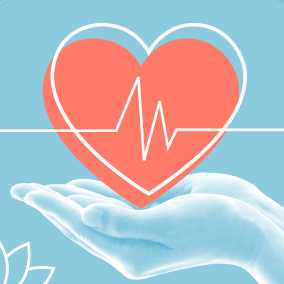Feeling overwhelmed by your child’s nut allergy diagnosis?
It’s “absolutely” normal for parents and carers to initially feel this way, says Paula Hallam, registered children’s dietitian at Plant Based Health Professionals and author of Plant Powered Little People (£20, Meze Publishing).
“Receiving a diagnosis of any food allergy can be overwhelming for parents at first. I think this is especially true for nut allergies as peanut and tree nut allergies seem to be more persistent than other food allergies, although there are treatments available now such as immunotherapy,” says Hallam.
But, she assures: “With the right support (medical, nutritional and psychological), families dealing with a child with a nut allergy can thrive.”
Information and support
Nut allergy reactions can vary in severity from person to person. However, it’s important for everyone to be aware of any warning signs of a serious reaction or anaphylaxis (such as sudden swelling of the lips, mouth, throat or tongue, difficulty breathing, dizziness or fainting, the skin or lips turning blue or pale, becoming unresponsive) – which should always be treated as a medical emergency, calling 999.
There can be a lot to get to grips with, including how to use EpiPens in case they’re ever needed in the event of a severe reaction, talking with your child’s school and any clubs they attend, as well as their friends’ parents and carers and making sure they’re informed too.
As well as your doctor, the charity Allergy UK, which supports people living with allergies, has lots of handy resources. On top of getting the right medical support, Hallam says nutritional and psychological support can also play a role.
“Nutritional support from a paediatric dietitian specialising in allergies can help ensure [your child’s] diet is balanced and provides all essential nutrients,” she says – especially as you will need to remove certain things from their diet.
“Ensuring children are having an adequate energy intake is very important for their growth and development,” Hallam adds.
“A psychologist can help with food anxiety and fears that can arise from a diagnosis of a nut allergy. This is so important to help children and parents feel more confident around food choices.”
Reading food labels
Katy Jones, CEO of food safety technology company Trustwell, says: “My son was diagnosed with a tree nut allergy at age four. It was really overwhelming to suddenly start analysing all food packaging. Now that my son’s 16, he carries his EpiPen and is quite adept at reading food labels.
“Learning to read food labels is a journey the whole family goes on,” Jones adds. “It gets even more complicated if you’re in another country and don’t know the language!”
Thankfully, Jones believes “that much of the food industry is phenomenal, filled with professionals, especially in food safety and nutrition, who really care and want to do the right thing. It’s clear that Natasha’s Law has had a profound impact on the industry, too.” The law, which came into effect in 2021, requires all food outlets in England, Wales, Scotland and Northern Ireland to ‘full ingredients labelling on pre-packed for direct sale foods’.
So, how do you read food labels when shopping?
“There are two essential areas on product packaging designated for crucial labelling elements. The ‘Principal Display Panel’ is the part of the product you see on the shelf at the time of purchase. It must include the name of the food and the net quantity. The ‘Information Panel’ is immediately to the right of the ‘Display Panel’, and that’s where you’ll find the allergen information,” says Jones.
“Allergens will not be in the ‘Nutrition Facts’ label. They will either be declared within the ‘ingredients’ list. Eg. peanut butter (peanuts), casein (milk), spices (sesame), or in the ‘Contains’ list. Eg. Contains: peanuts, milk, sesame. The ingredients must be listed by weight in descending order of predominance, and by their common or usual name.”
Allergy UK also has a helpful ‘Decoding Food Allergy Labelling‘ section on their website.
Being mindful of cross-contamination
This is when traces of a specific allergen may end up contaminating other food, due to it being prepared in the same area or with the same utensils, for example.
“This can pose serious health risks for individuals with food allergies. Even a small amount of an allergen can cause a reaction in someone who is sensitive,” says Jones. “By staying vigilant and informed, you can make food choices that are safe and suitable for you and others.
“In your kitchen, prevent cross-contamination by using separate utensils, cutting boards, and surfaces for allergenic and non-allergenic food. Clean surfaces thoroughly after preparing allergenic foods. Also, keep allergenic foods stored separately from other foods, ideally in sealed containers.
“When eating out, communicate your dietary restrictions clearly to the staff. Don’t hesitate to ask about their food preparation practices to ensure your meal is safe from cross-contamination.”











